Your potential customers are out there, eagerly searching for information about the products and services they need. But how will they find your company amid all the noise online?
When it comes to creating content that attracts potential customers, one of the most important things to consider is the buyer's journey. The buyer's journey is the flow that prospective customers go through when they become aware of a need or want, consider their options, make a decision, and then take action. Creating content that speaks to each stage of the buyer's journey can help you attract and convert more leads.
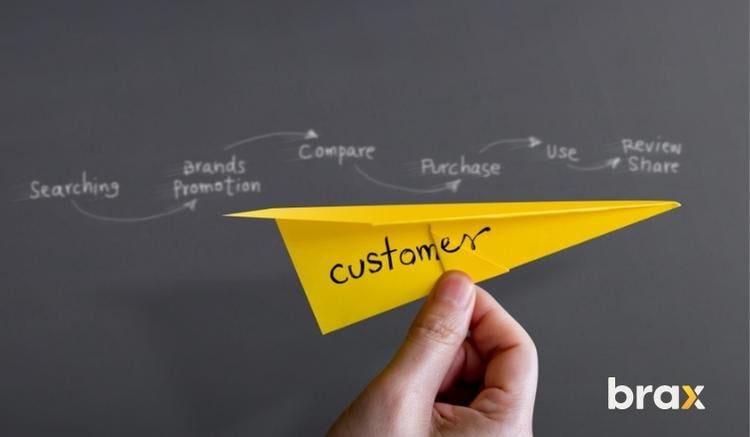
Table of Contents:
A Briefer on the Buyer's Journey
Awareness Stage Content Marketing
Consideration Stage Content Marketing
Decision Stage Content Marketing
Loyalty Stage Content Marketing
In this article, we'll take a look at examples of content for all stages of the buyer's journey.
We'll start by discussing the awareness stage, in which customers are just beginning to realize that they have a problem or need. Then we'll move on to the consideration stage, in which customers are evaluating their options and considering different solutions.
Next, we'll discuss the decision stage, in which customers are ready to purchase. Finally, we'll talk about the evaluation or loyalty stage to keep existing clients within the company. By the end of this article, you should have a good understanding of how to craft content for each stage of the buyer's journey.
A Briefer on the Buyer's Journey
Essentially, a buyer's journey is the process buyers go through to become aware of, evaluate, and purchase a new product or service. Though it varies depending on the buyer and the product, there are usually four key stages of the buyer's journey: awareness, consideration, decision, and evaluation.
The journey begins when buyers realize they have a problem or opportunity they need to address. They enter what is known as the awareness stage, where buyers realize they have a problem or need a new product or service that can meet that. They begin to search for information about potential solutions and learn more about the options available to them.
Once they've zeroed in on the solution, they enter the consideration stage. This is when buyers narrow down their options and compare different products or services. During this stage, they often seek out online reviews, case studies, blog posts, and other forms of content to help them make an informed decision.
Finally, buyers choose the product or service that best meets their needs in the decision stage.
Once they've made their purchase, they enter the post-purchase stage, where they assess whether or not the product or service lives up to their expectations. If it does, they may become brand advocates; if not, they may begin another buyer's journey to find a better solution.
This last stage is also known as evaluation, loyalty, advocacy, and more.
As you can see, the buyer's journey is not a straight line; buyers can enter and exit the journey at any point. And while every buyer's journey is unique, there are some commonalities that all journeys share.
For example, all journeys begin with a problem or opportunity, and all end with a purchase decision. Additionally, all journeys involve some degree of research, evaluation, and comparison-shopping.
By understanding the buyer's journey, businesses can develop marketing and sales strategies that target buyers at each stage of their journey and help them move closer to a purchase decision.
This customer journey is mostly incorporated into the marketing funnel. The awareness stage is usually at the mouth of the sales funnel, while the decision stage is at the bottom.
[image of marketing funnel with stages]
Read our in-depth guide on marketing funnels for more information about how this tool can help you with your marketing strategies.
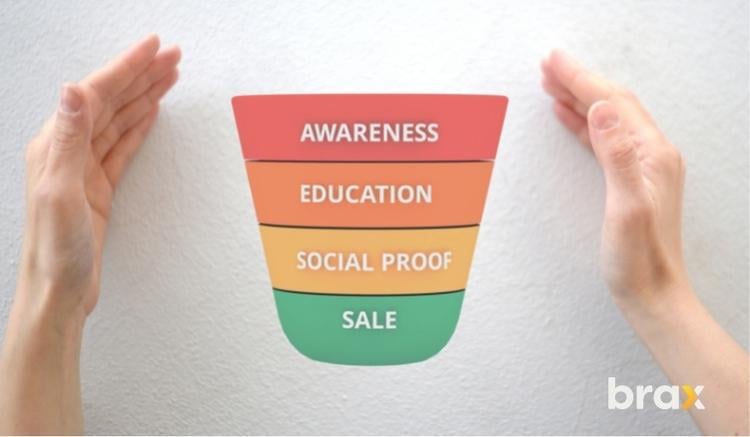
Awareness Stage Content Marketing
In the Awareness stage of the buyer's journey, your goal is to introduce your brand to as many people as possible and get them interested in what you have to offer.
To do this, you need to create content that is both informative and engaging. This can include blog posts, infographics, eBooks, and more. The key is to ensure that your content is relevant and arouses curiosity.
Remember: you're just trying to get them to notice you at this stage!
This doesn't mean you'll try anything, even tactics unrelated to your offer. It means being creative enough to look into your features or benefits and use one of them to encourage clicks or viewership.
While it may seem like a lot of work, creating high-quality Awareness stage content is essential if you want to attract new customers and convert them into sales. With a little planning and effort, you can create content that will help your business grow by leaps and bounds.
How to Craft Content for the Awareness Stage
The Awareness stage is all about introducing your product or service to your audience for the first time. And while that might sound like a simple task, there's actually a lot that goes into crafting content for this stage of the customer journey.
To start with, you need to make sure that your content is targeted at the right audience. After all, there's no point in creating content that no one will see or appreciate. Once you've identified your target audience, you need to create content that will capture their attention and introduce them to your brand. This means creating titles and headlines that are compelling and interesting, as well as including images and videos that grab attention.
Once you've done all this, you need to make sure that your content is easy to find. You should optimize it for search engines and promote it through social media and other channels. After all, what's the use of having something interesting if no one will ever see it?

Channels to Use for the Content in the Awareness Stage
As anyone who has tried to create awareness for a product or service knows, it can be a challenge to get people to pay attention. With so many brands competing for attention, it's important to use the right channels to reach your target audience. Here are a few effective channels for the awareness stage:
Social media
In a world where people are constantly bombarded with information and ads, it can be difficult to capture the attention of your audience. However, social media provides an ideal platform for reaching potential customers. Posts on Facebook, Twitter, and Instagram can be seen by thousands of people, and ads on these platforms can be targeted to specific demographics.
Furthermore, social media allows you to interact directly with your audience, which can help to build trust and brand loyalty. With its vast reach and ability to engage potential customers, social media is an essential tool for any business. Social media is a powerful tool for raising awareness. Use paid social media ads and organic posts to reach your target audience where they are already spending time.
Native advertising
Native advertising is a paid form of advertising that blends in with the surrounding content on a website or app. Unlike traditional banner ads, native ads are designed to match the look and feel of the surrounding content, making them less intrusive and more user-friendly.
As a result, native ads have been shown to be more effective at capturing the attention of users than banner ads. In addition, native ads are often better aligned with the interests of the user, as they are typically related to the content that surrounds them. For these reasons, native advertising is an effective way to capture the attention of your target audience.
This format is considered the best alternative when social media cannot be used for your products, such as categories related to health and gambling.
Banner advertising
Banner ads, when done correctly, can be an extremely effective way of capturing the attention of your target audience and driving awareness for your brand or product.
However, banner blindness is a real phenomenon, and users are getting better and better at ignoring standard banner ad placements. To cut through the noise, your banner ads need to be eye-catching and relevant to the user.
Timing is also important — you need to make sure your ad is placed in front of the user at the right time in their journey when they're most likely to be receptive to your message. If you can tick all of these boxes, then banner ads can be a great way to raise awareness for your brand or product.]
PPC Advertising
PPC ads are a great way to capture your audience's attention and get them to take notice of your brand or product. By targeting key keywords and phrases, you can ensure that your ad is seen by people who are already interested in what you have to offer.
This is essential for the awareness stage of the buyer's journey, as it helps to get potential customers interested in your product or service.
Steps to Creating Content for the Awareness Stage
So let's discuss the concrete steps that you need to make when crafting content for the awareness stage.
1. The first step is to grab attention with a catchy headline.
Consider using expressions like “You Won’t Believe What Happened Next” or “This Will Change the Way You See [X].” Use the urgency principle or the curiosity principle.
2. Write in a clear, succinct, and easy-to-read style.
Keep your sentences short and to the point on your landing pages. Use active voice as much as possible, and break up long paragraphs with bullet points or images.
3. Focus on providing value to the reader.
Don’t try to sell them anything just yet—just offer helpful information that will pique their curiosity and make them want to learn more.
4. Use strong calls to action (CTAs) throughout your piece.
This would encourage readers to take the next step in their buyer’s journey—whether it’s subscribing to your newsletter, downloading a white paper, or scheduling a consultation.
By following these steps, you can create content that will capture your target audience's attention and introduce them to your brand.
Awareness Stage Content Examples
You know the channels, and you've read the steps on how to craft content for the Awareness stage. Now, let's talk about actual examples to help you turn the concept into concrete content.
Sample #1: Using social media for a beauty product
You're scrolling through your Facebook feed when you see a post from your cousin. She's raving about this new skincare line she just started using. You check out the website and see that they have a blog. The first article you click on is titled "5 Myths About Acne."

This is just one example of a scenario where the combination of social media and blog posts can be used to attract customers in the Awareness Stage.
Sample #2: Using blog posts or a landing page for your ads for a CRM tool
Let's say you run a software company that specializes in customer relationship management (CRM) systems. Your target audience is small businesses that are looking for a CRM to manage their customer data.
In the awareness stage, potential customers become aware that they have a problem that needs to be solved. For example, they may realize that they are losing track of customer data and need a better way to manage it. As a result, they may start searching for information about CRM systems.
One way to attract these potential customers is to write blog posts that provide information about CRM systems. These posts can help potential customers learn about the different types of CRM systems and how they can be used to solve various business problems.
For example, you could write a post about the different types of CRM systems and how they can be used to manage customer data. In addition, you could write a post about the benefits of using a CRM system and how it can help businesses improve their customer relationships.
By writing these types of content for your blog posts or landing pages, you can attract potential customers who are in the awareness stage and help them learn more about your company and its products.
Consideration Stage Content Marketing
Attention! Your customers are speaking… and it’s important to listen.
The consideration stage is when your customers are actively researching their options to find the best solution to their problem. This is the stage when they’re looking for detailed information about your product or service, including features, benefits, pricing, and more.
This type of content is all about helping potential customers understand their options and making comparisons.
This means that your content should provide objective information about your product or service, as well as its features and benefits.
You should also include information about your competitors and how your offering stacks up. In addition, consider creating helpful buyer's guides and resource lists that customers can use during their research process.
By providing this type of content, you can establish yourself as a trusted resource and help move potential customers one step closer to making a purchase.
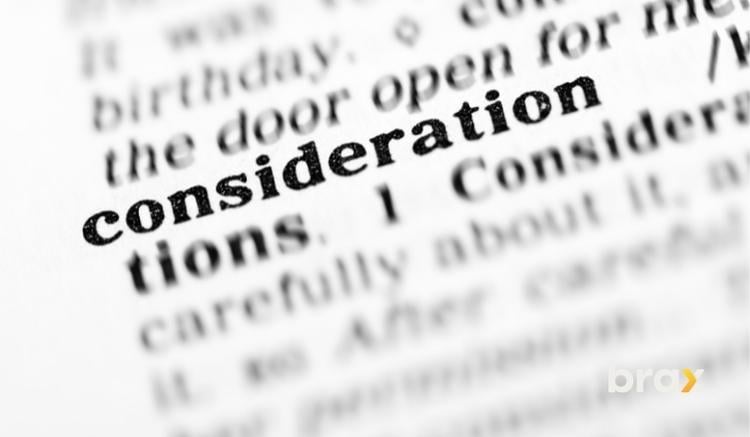
How to Craft Content for the Consideration Stage
This stage is when your leads are starting to become sales-ready and are investigating their options. They've recognized a need or a problem, and they're now looking for a solution.
Your job in this part of the buyer's journey is to educate your leads about their options and help them narrow down their choices. In order to do this, you need to produce content that is both informative and engaging. Here are a few tips for crafting content for the consideration stage:
1. Address common pain points.
In this stage, your leads are looking for information about how to solve their problem. Address their pain points head-on in your content and offer specific solutions.
2. Compare and contrast different options.
Once your leads have narrowed down their options, they'll want to know more about the differences between each option. Help them out by writing detailed comparisons of each option's pros and cons.
3. Use data and research to support your claims.
Throughout the entire sales process, data is king. Use data and research to back up any claims you make about your product or service being the best solution for your lead's needs.
By now, you're probably aware that the content you create for each stage needs to be different. After all, you wouldn't give a customer the same information that you would give to someone who's just getting to know your business.
Types of Content to Make for the Consideration Stage
So what exactly should you include in your consideration stage content? Here are a few ideas:
Case studies
Potential customers at this stage of the buyer journey are interested in seeing how your product or service has helped others. Case studies are a great way to show off your successes and demonstrate how your offering can benefit those who purchase it.
Product comparisons
If your potential customers are considering multiple options, they'll want to know how your product stacks up against the competition. Include a side-by-side comparison of features and benefits in your consideration stage content to help them make an informed decision.
Customer testimonials
Just like case studies, testimonials from satisfied customers can help show potential buyers what they can expect if they choose your product or service. Include quotes and video testimonials in your content to add an extra level of credibility.
Product demonstrations
A product demonstration can be a great way to show potential customers how your offering works and what they can expect from it. This technique is called experiential marketing, and it helps cement your product or brand into your customers' minds.
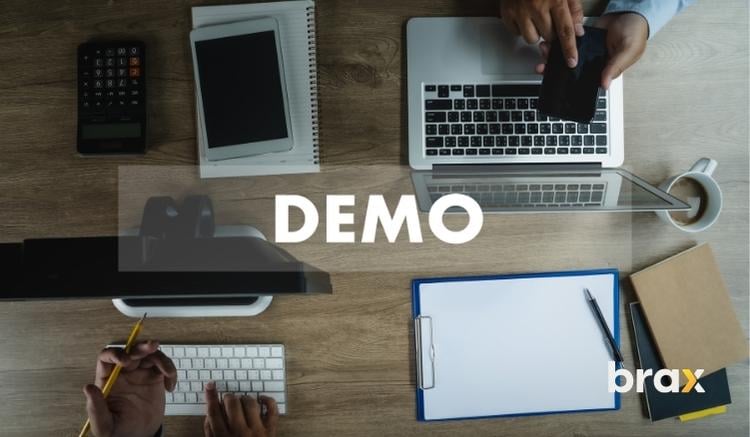
If you're marketing online, include a video or interactive demo in your content so customers can get a hands-on experience. Here at Brax, we offer a free demo so potential customers can see how our platform actually works. If you want to see it for yourself, book a demo today.
Channels to Use for the Content in the Consideration Stage
Now that you know what to include in your content, it's time to think about the best channels to use for distribution.
Here are a few ideas:
Social media
Social media is a great way to reach potential customers who are in the consideration stage. Use platforms like Twitter, LinkedIn, and Facebook to share your blog posts, infographics, and other types of content.
It's not so much as catching their attention as providing information. This means your company profile or brand page should not focus solely on getting your followers to visit your website. You should add posts that provide value to the reader and give them more information about the product or company to help them know you more.
Your website
Where's the best place to provide all the details about your company and your offer? Your website, of course! You can make comparison articles or tables, infographics, product pages, plans & pricing pages, and more.
You can break down information into multiple pages so you can go as in-depth as you want or as your customers need you to be. The less information you provide, the more suspicious you become, so be thorough!
Paid Ads (Display Ads, Native Ads, Social Media Ads)
Now that the potential customer has noticed you, the ads that you show them must serve as a "follow-up." This is where retargeting or remarketing comes into play.
When someone visits your website, you can add a cookie to their browser so you can "retarget" them with ads on other websites. This is a great way to stay in front of potential customers who have shown interest in your product or service but haven't yet made a purchase.
You can use retargeting to show potential customers ads for your product or service on social media, websites, and even in their email inboxes. This ensures that your company is always at the top of their mind and that they're reminded of why your product or service is the best solution for them.
Display or banner ads, native ads, pops, search ads, and social media ads are five of the most popular ad types that have retargeting options.
By using retargeting, you can increase the chances that potential customers will make a purchase from you. Learn how to Increase Conversion Rates with Remarketing.
Email marketing
Email marketing can be used at any stage of the buyer's journey, but it's especially effective in the consideration stage. You can send targeted emails with links to your best content, as well as exclusive deals and discounts to encourage leads to purchase your product or service.
Steps to Creating Content for the Consideration Stage
The first step is to understand what your audience is searching for during this stage. To do this, you need to research the keywords they are using and the questions they are asking.
They likely have specific questions and pain points that they're looking to solve, so your content should be focused on providing helpful information and resources. Once you have a good grasp of their needs, you can start creating content that meets those needs.
The second step is to create content that is helpful and informative. Remember, at this stage your goal is to educate your audience and help them make an informed decision. This means your content should be comprehensive and well researched.
Third, make sure your content is properly optimized for search engines. This will help ensure that as many people see your content as possible. Also, your content should be easy to consume and digest. Keep it organized and clear, and break it up into smaller pieces if necessary.
Finally, use strong calls to action to encourage your audience to take the next step. Whether you want them to download a white paper, sign up for a free trial, or make a purchase, your CTA should be clear and concise.
Consideration Stage Content Examples
There are a variety of content formats that can be effective at this stage, from blog posts and eBooks to webinars and infographics. The key is to provide value and give potential customers the information they need to make a well-informed decision about your offer, product or service.
Some examples of content you can create for this stage include:
- Ebooks
- Blog posts
- White papers
- Product comparisons
- buyer's guides
- infographics
- How-to articles
- Educational videos or webinars
- Infographics
- 'Why us?' pages on your website
- (Social media) testimonials and reviews from customers, clients, or industry experts
Each of these pieces of content should be designed to educate the reader and help them compare their options. Let's have a look at actual examples that will help you in making your own.
Sample #1: A how-to guide for a beauty product (actual landing page content)
Not only is dealing with acne annoying, but it can also be expensive. You try all sorts of skincare products, but nothing seems to work. Then, you discover a new brand of skincare specifically for acne-prone skin, and it actually works! Here's a step-by-step guide to using this brand of skincare to reduce acne:
1. Start with a clean face. Gently wash your face with a mild cleanser. Be sure to remove all makeup before going to bed.
2. Apply the acne treatment serum evenly over your entire face. Allow it to dry for at least five minutes before applying moisturizer.
3. Follow up with an oil-free moisturizer. This will help to hydrate your skin without clogging pores.
4. Apply sunscreen every day, even if you are staying indoors. Choose a sunscreen with an SPF of 30 or higher.
5. Wash your face twice a day, morning and night. Use a mild cleanser and lukewarm water. Avoid scrubbing or excessive washing, which can irritate the skin and make acne worse.
6. Be consistent with your skincare routine. It may take several weeks to see results, but stick with it!
This guide provides detailed instructions on how to use a specific product to achieve desired results. This would be an ideal piece of content for someone in the consideration stage who is looking for information on how to treat their acne.
Sample #2: Product Comparison for a CRM product/tool (actual comparison page content)
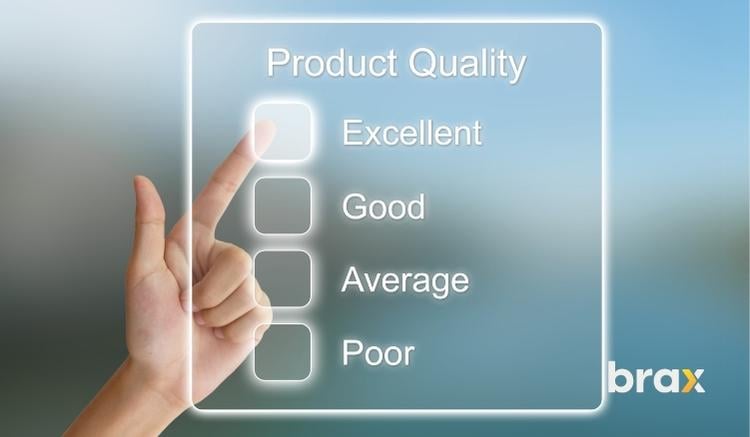
With so many CRMs out there, it can be hard to know where to start. To help narrow down your options, we've put together a list of the best CRMs for small businesses.
We've considered factors like features, price, and ease of use to help you find the perfect CRM for your business. So whether you're looking for a simple solution or a comprehensive tool, be sure to check out our list.
And if you're still not sure which CRM is right for you, our team of experts would be happy to help. Just schedule a demo and we'll walk you through the features of each CRM on our list.
To make it easier to consume, you can create a comparison table with features and corresponding checkmarks to highlight the benefit of using the product you are recommending over the other.
Decision Stage Content Marketing
According to a study, the average person makes 35,000 decisions every single day. You might not think that much about most of them—what you're going to wear, what you're going to eat for breakfast, and which route you're going to take to work.
But other decisions are much bigger and can take days, weeks, or even months of reflection before you finally come to a conclusion. Buying a house is a great example. It's probably the most expensive purchase you'll ever make in your life, so it's understandable that you want to take your time and weigh all your options before making a decision.
The same is true of growing your company. As you start to scale and add new products or services, you need to be strategic about how you're marketing them—which is where content marketing comes in.
The decision stage of content marketing is all about helping your potential customers understand what they need to know in order to make a purchasing decision.
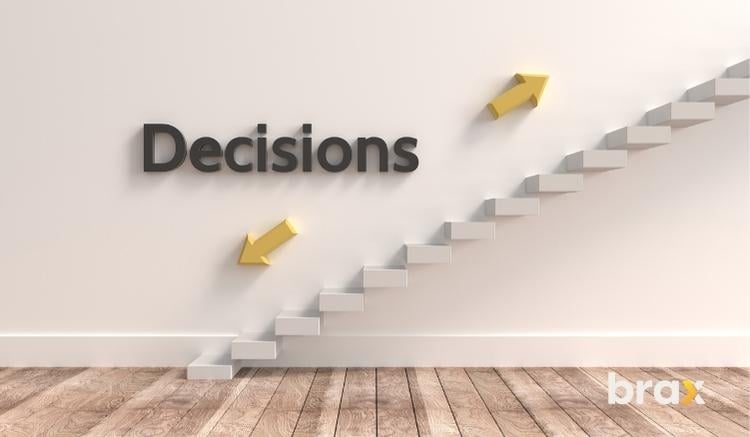
You're not trying to sell them anything at this point; you're just providing them with helpful information so they can decide for themselves if your product or service is the right fit for their needs. That means creating high-quality content that answers their questions and addresses their pain points.
For impulse purchases, on the other hand, this stage includes giving your customers an extra push or an extra incentive to make an emotional decision quickly. As such, you must deeply understand your customer's buying motivations in order to encourage them to take that leap.
How to Craft Content for the Decision Stage
By the time a prospective customer reaches this stage, they have a pretty good idea of what they need and what they want. Now, they just need that final push to make a purchase.
That's where you come in. As a decision stage content creator, your job is to provide your audience with the information they need to make an informed decision. This means being able to answer their questions and dispel any doubts they may have. It also means creating content that is both accurate and persuasive.
Accuracy is essential to maintaining credibility with your audience. But you also need to make a strong case for why your product or service is the best option available.
To do this effectively, you need to start by understanding what questions your audience is asking at this stage. Once you know that, you can create content that directly addresses those needs.
Whether it's a blog post, an infographic, or even just a simple FAQ page, as long as it provides value and solves a problem, it will help move your audience closer to a purchase.
You should likewise try highlighting the unique features of your offering and emphasizing the ways in which it will benefit the customer. You can also address any potential objections that the customer might have.
By providing clear, concise, and convincing content, you can give your audience the confidence they need to make a purchase.
Channels to Use for the Content in the Decision Stage
Your potential customers are in the decision stage where they know they need a product or service like yours but haven't decided on which brand to choose yet. They're doing their research and want content that will help them make an informed decision.
Website FAQ page
Your FAQ page can address common concerns and objections that prospects have at this stage.
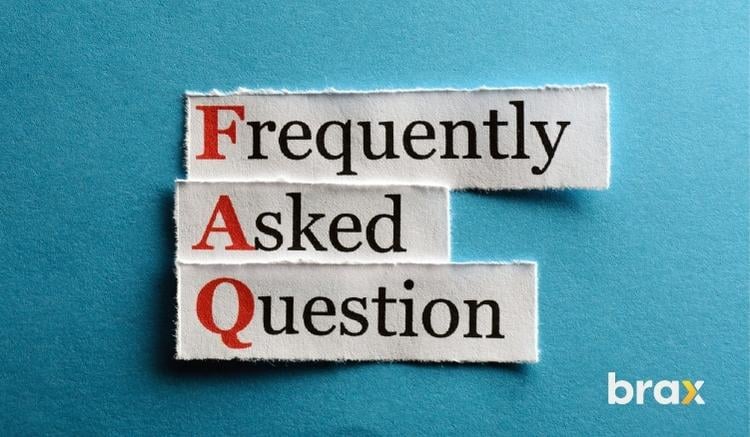
Plans & Pricing page
Your plans & pricing page should be clear and concise, with a comparison of features and benefits among different plans or even against competitors.
Product page
Your product page should highlight the features and benefits of your product or service and should include customer testimonials. Never underestimate the power of social influence.
Video content websites like YouTube and Vimeo
Your video content should show how your product or service solves a problem for the viewer. Video is the most consumed content nowadays since there are a lot of people who'd rather watch than read. If that's what they want, give it to them!
By providing helpful, informative content on these channels, you'll be able to guide your prospects through the decision stage and ultimately win their business.
Steps to Creating Content for the Decision Stage
At the Decision stage of the customer journey, your content should be focused on helping leads make a purchase decision. Here are a few steps to creating content for this stage:
1. Understand what your audience is looking for.
What specific pain points are they trying to solve? What kind of information will help them make a decision?
2. Research your competition.
What content is your competition producing for this stage? How can you produce something better?
3. Create comprehensive posts that compare and contrast your product or service with your competitor's.
Include detailed information about features and benefits, as well as pricing comparisons.
4. Focus on the unique benefits of your offering.
Why should leads choose your product or service over others? How can your product or service change their lives? Lean on the emotional side of buyers — a majority of them decide based on emotions, after all.
5. Use persuasive language to encourage leads to choose your product or service.
Address any objections they may have and highlight the advantages of your offering.
6. Include calls-to-action throughout your content.
Make it easy for leads to take the next step with clear and concise CTAs. Useful CTAs for this stage are Sign Up Now, Subscribe, Buy Now, Join, and more.
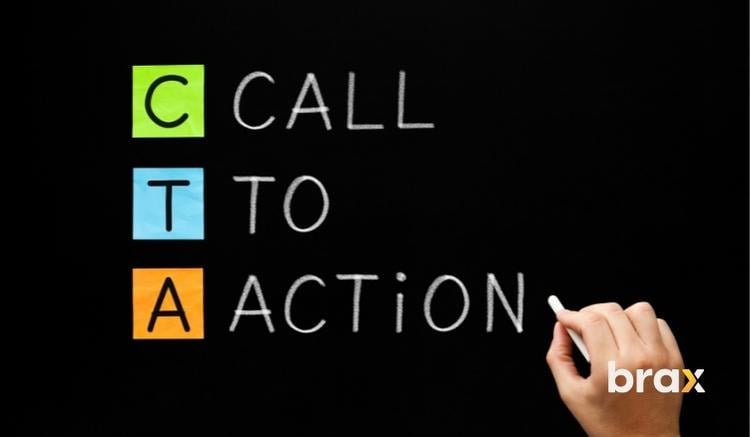
By following these steps, you'll be able to produce content that is helpful, informative, and persuasive — everything your leads need to make a purchase decision.
Decision Stage Content Examples
Time to put my money where my mouth is and talk about actual examples. We'll be continuing with the beauty product and CRM examples.
Sample #1: Video content for skincare brand
In this video, we see a close-up of an actor's face with some text overlay. The text reads, "Acne sucks. But there's hope." We then see the actor start to apply the skincare product to their face.
They explain how the product has helped them clear up their acne, and how it can help others who are struggling with the same problem. They talk about how the product is affordable and easy to use, and how it has made a big difference in their life.
At the end of the video, we see the actor's faces before and after using the product, and we can see that their skin is much clearer. The before and after shots are accompanied by the text, "Don't let acne control your life."
This video is encouraging and informative, and it does a great job explaining how this particular skincare product can help prevent acne.
Sample #2: Plans and Pricing page of a CRM tool
Looking for a CRM tool that will help you take your business to the next level? Look no further than Aim CRM. Our Plans and Pricing are as follows:
For just $5/month, you can get started with our Basic plan. This includes:
-1 user account
-2GB of storage space
-Access to our basic features, including contact management, task management, and calendar sync
Need more than that? Our Business plan is just $10/month and includes:
-3 user accounts
-5GB of storage space
-All of the features of the Basic plan, plus advanced features like sales pipeline management and integrations with popular accounting and email tools.
And for businesses that need even more, we have our Enterprise plan. This includes:
-Unlimited user accounts
-10GB of storage space
-All of the features of the Basic and Business plans, plus premium features like custom reports and dedicated customer support. It has everything you need to get started.
So what are you waiting for? Choose the plan that fits you best and sign up today!
Loyalty Stage Content Marketing
The loyalty stage (also called the retention and evaluation stage) of content marketing is all about keeping your customers coming back for more. This is where you focus on providing valuable and relevant content that will keep them engaged with your brand. You'll want to produce truly helpful and informative content without being too sales-y.
At this point, your audience has become loyal customers or fans and is committed to sticking around.
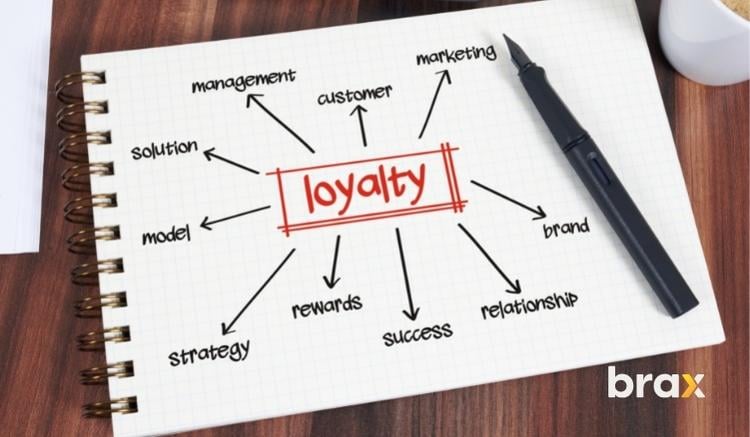
This is where you need to focus on providing them with content that will keep them engaged and coming back for more. You will work on making them want to stay with your business.
This could include product reviews, behind-the-scenes looks at your business, or even helpful tips and advice. Whatever you choose to produce, the goal is to keep your audience happy and engaged so that they remain loyal customers or fans for the long haul.
Remember: finding new customers is more expensive than maintaining and nurturing existing ones.
How to Craft Content for the Loyalty Stage
It's one thing to get someone to try your product or service. But it's a whole other level of challenge to get them to come back and buy again. That's why it's important to consider the needs of customers who are at the evaluation stage of the customer journey.
Here are a few tips for crafting content that will resonate with this audience:
First, focus on delivering value.
Your content should offer something that your customers can't get anywhere else. whether it's helpful information, exclusive deals, or access to special features.
Second, make it easy for customers to find the content they're looking for.
Organize your website in a way that makes sense for your customers and make use of search engine optimization techniques so that your content shows up when people are looking for it.
Third, keep it fresh.
The loyalty stage is all about keeping your customers engaged. That means regularly publishing new and exciting content. If you can keep them on their toes, they'll be more likely to stay loyal.
Fourth, say thank you.
A little appreciation can go a long way. Show your customers that you value their loyalty by expressing your gratitude. A simple "thank you" will go a long way towards keeping them coming back.
Finally, don't forget about the personal touch.
Even though loyalty stage customers are more interested in what you have to offer than in building a relationship with your brand, they still appreciate feeling like they're part of something special. So make sure your content reflects your brand's personality and values.
By following these tips, you can craft content that will resonate with your retentions stage customers and help keep them coming back for more.
Channels to Use for the Content in the Loyalty Stage
The loyalty stage is when customers have been using your product or service for a while and are happy with it. They may not be ready to commit yet, but they're passionate about what you're offering. At this stage, your goal should be to keep them engaged and build on their positive experiences.
There are a few different channels you can use to reach your loyal customers:
Loyalty programs on your website
This is a great place to inform your existing customers of offers exclusive only to them. Customers like the feeling of being treated as VIPs and being taken cared of above and beyond.
By offering incentives and showing appreciation, you can encourage customers to stick around and continue doing business with you.
Social media
Social media is a great way to connect with customers and build relationships. This is a great platform for answering questions, providing customer service, and sharing news and updates. You can even form exclusive social media groups that only subscribers can be a part of.
Email marketing
Email is a great way to stay in touch with your customers and provide them with valuable information, such as tips on how to use your product or service more effectively.
Direct mail
Sometimes, a physical piece of mail can be more impactful than an email. You could send out postcards or even custom loyalty cards that offer discounts or other benefits.
Physical thank you cards and discount cards offered right after a purchase can double the chances of this customer coming back for more.
Steps to Creating Content for the Loyalty Stage
Now that you know what kind of content to create and where to share it, let's take a look at the process of creating this content.
Step One: Know Your Loyal Customers
The first step to creating content for your loyalty stage is understanding who your loyal customers are. Take some time to segment your customer base and create personas for your different types of customers. This will help you understand what type of content will resonate with them. Once you have a good understanding of your customers, you can move on to the next step.
Step Two: Understand What They Want
The second step is understanding what your loyal customers want from you. What type of content do they want to see? What format do they prefer? How often do they want to see new content? The answers to these questions will help you create content that your customers will love.
Step Three: Be Consistent, But Keep them Wanting More
Once you've created some great content for your loyal customers, it's important to be consistent. Provide them with what they expect from you, such as excellent customer service and exclusive offers.
Loyalty Stage Content Examples
The Loyalty Stage is the final stage of content marketing. Here, your goal is to turn your customers into raving fans who promote your business for you. To do this, you need to provide them with content that is so valuable and relevant that they can't help but share it with their friends and followers.
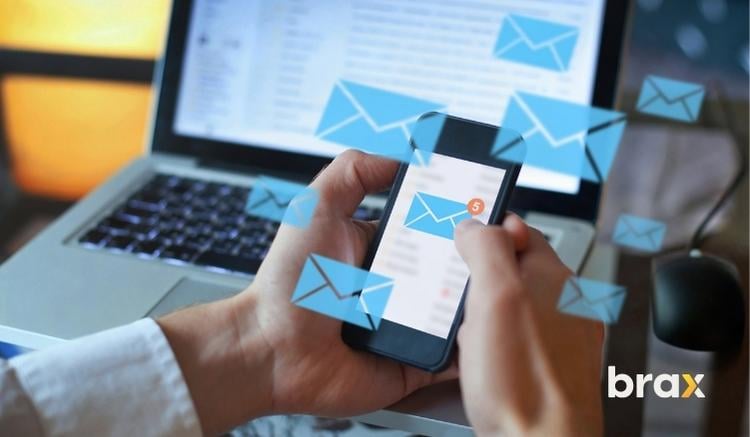
Sample #1: Email Marketing content for skincare brand
Hi Loyal Customer,
We hope you're loving your skincare products! We know that you're dedicated to using the best products to keep your skin looking perfect. So we wanted to let you know about our new skincare line that's just launched.
This new line is packed with nutrients that your skin will love. And it's all organic, so you can feel good about using it knowing that it's gentle on the environment. We know you'll be impressed with the results.
We know that you're loyal to our brand of skincare, and we want to show you how much we appreciate your loyalty. That's why we're offering a special loyalty discount on this latest skincare product.
So take advantage of this offer and stock up on our new product today. Thanks again for your loyalty!
[Name]
Sample #2: A discounted deal for a CRM tool on a Cyber Monday
Cyber Monday is just around the corner and we all know what that means - time to snag some incredible deals! And this year, we've got a doozy of a deal for our existing users.
For 24 hours only, you can get our premium CRM tool for 50% off the regular price! That's right, half off! But this offer is only good for existing users, so act now before it's too late.
This tool is essential for staying organized and keeping track of your customer interactions. So why wait?
Get it now and be ready for whatever the holiday season throws your way. Happy shopping!
The content above can be used on emails, press releases, blog posts, landing pages for promotions, and so much more.
Rounding Up
By now, you should have realized the value of content marketing. You can keep your audience engaged by providing relevant and targeted content at every stage of the customer journey and helping them move closer to a purchase decision.
But crafting effective content isn't always easy. In our fast-paced, constantly-connected world, it can be tough to capture attention and hold it long enough to deliver your message. That's why we've put together this helpful guide on how to craft content for every stage of the buyer's journey.
If you think you still have a lot to learn and would like to be guided by experts in the field, send us a message!
Brax.io is a full-service marketing agency that specializes in helping businesses create and execute effective digital marketing strategies. We would love to help you take your content marketing to the next level.
Until next time, happy crafting!
If you liked this article, you might also be interested in the following:
Long Form Content Vs Short Form Content: Which Is Better?
How to Infect Your Audience with Viral Marketing

